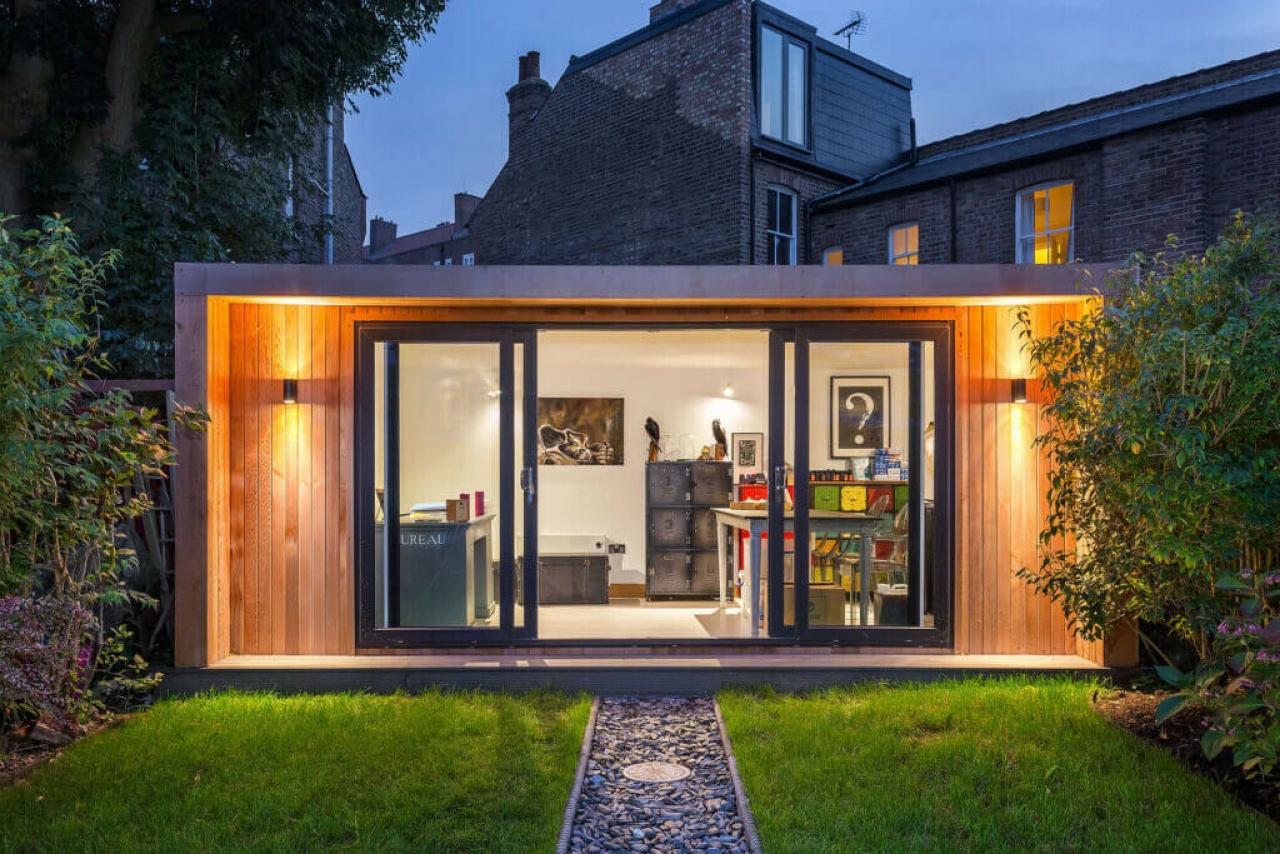What do you find to be the hardest part about working from home?
Distractions created by family, pets, television, or the fact that you can't stop helping yourself to the contents of your fridge. Or do you find it hard to switch out of work mode at the end of the day?
If you're trying to find a solution, then it might be time to invest in a 'shoffice'. With almost a third of the UK workforce now working remotely from home, according to the Office of National Statistics, 'shed offices' - or work spaces built in the garden have become something of a craze!
1. What is a shed office?
As the name suggests, they are a cross between an office and garden shed. But these modern super-sheds are a far cry from the moss-covered, cobweb infested, rusty tool stores of the past. In some cases, homeowners are fitting them with every modern convenience, from insulated walls and underfloor heating to high-speed wifi and luxury bathrooms.
2. How long do they take to build and how much do they cost?
As you might imagine, the cost and construction time depends on the type of outbuilding you go for. The typical cost can be anything from £5,000 to £25,000 depending on the design and materials used. The cheaper, more basic models are usually around 2.4metres by 1.8metres, whereas the more expensive installations measure up to 5metres by 3metres. The build time can also vary widely depending on whether you would prefer your shed office to be built from scratch on site, or to purchase a pre-fabricated one which can then be delivered and put together in a matter of days. If using a pre-fabricated structure, this could be ready for use once delivered to your home within a few days - but as with anything, you will likely pay a small premium for this luxury. Alternatively, using a more traditional on-site construction process you are likely looking at around 6-9 weeks depending on the size and complexity.
3. Do I need planning permission?
Typically you won't need to have planning permission, as the majority of garden offices would fall under the scope of what is known as permitted development. However, within these rules there are certain limitations that it is useful to be aware of.
- First, the eaves of the building must be no higher than 2.5metres, whilst the highest point must be no more than 4 metres if it has a dual pitched roof, or three metres for any other type of roof.
- Second, the floor area must not exceed 15 square metres - otherwise you will require building control sign-off to show the structure fits within building regulations.
- Third, a garden office cannot contain a sleeping area and must not be used as a separate dwelling unit.
- Fourth, if you need to connect your new workspace to the mains utilities you will need permission from building control.
- Finally, it must not take up more than 50 per cent of the outside space surrounding the original house.
The original house refers to your property as it was first built, or as it stood on 1 July 1948 if it was constructed before that date. This means that you would be wise to check whether your property has been extended by a former owner - in case that compromises the amount of space you can build on. Furthermore, if you live in a national park, a listed building or a conservation area, you will need to seek specific permission from the local planning authority.
4. Will it impact my home insurance?
One aspect that homeowners might forget to consider is home and contents insurance. Make sure you update your insurance provider, as it could increase the rebuild cost of your home - Not doing this could invalidate the policy if you need to make a claim in the future. Some insurance providers will not offer full cover for items in any outbuildings as part of their standard policy.A homeowner would be wise to check the exact wording of their home insurance policy to understand to what extent they are covered.
5. Is a garden office a good investment?
Improving the saleability of your home is often a key consideration when making improvements. With many predicting home working to be a feature of our lives in a post lockdown world, a garden office can be expected to appeal to buyers in the future. It is also important to consider whether your new office compromises the existing garden space - this could mean you might put off some future buyers where a larger garden is a priority.
6. What else should I consider before building one?
First and foremost, you'll need to work out what you'll actually be using it for.
Next, you'll need to consider the style, design and features that are important for you.
Finally, consider the orientation of your shed office: whether it is north or south-facing could make an enormous difference to how you design it and use it. Quite often, a garden office will only have windows facing in one direction, because they are typically tucked away at the end of a garden. Natural light and orientation plays a critical role in creating a good working space.





 by
by 
Share this with
Email
Facebook
Messenger
Twitter
Pinterest
LinkedIn
Copy this link